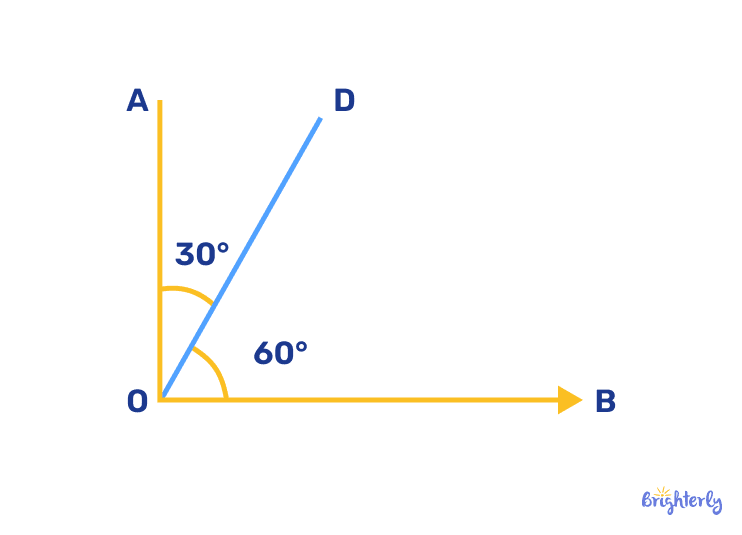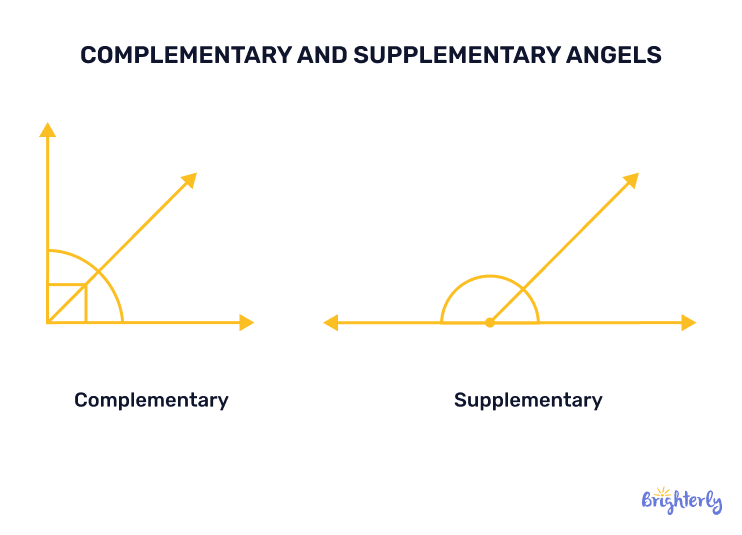Complementary Angles – Meaning, Definition With Examples
Updated on November 27, 2025
As part of your geometry classes, you will learn about different types of angles and how they operate in our world. Angles are key to your understanding of geometric concepts, so it’s vital to have this knowledge.
One of these types of angles is complementary angles. These are angles with degree measurements that, when combined, total 90 degrees. This means they also form a right angle, which always measures 90°.
You’ll soon discover the function of these angles and why they are so integral to your geometry learning. Here, we’ll define complementary angles and explore their properties and formulas. We’ll also provide examples and practice problems so you can familiarize yourself with exam questions on complementary angles.
What are complementary angles?
Complementary angles are pairs of angles that, when their degree measurements are added together, represent 90 degrees. Because a right angle measures 90 degrees, it also means they come together to form a right angle. We cover the full complementary angles definition below.
Definition of complementary angles
Complementary angles are two angles whose measures add up to 90 degrees. As a result, they naturally form a right angle. Complementary angles do not need to be next to one another to be complementary — so even if they are not visually forming a right angle, they are still complementary! The individual measurements of each angle do not matter; it is simply the fact that they add up to 90°.

Examples of complementary angles
One complementary angles example is the two non-right-angled angles in a right triangle are complementary angles, because all angles in a triangle add up to 180 degrees, and the right angle makes up the first 90 degrees. We can also look at some numerical complementary angles examples — in all of them, the angles will be complementary because they add up to 90.
- 60° and 30°
- 45° and 45°
- 75° and 15°
- 40° and 50°
Properties of complementary angles
Like all geometric concepts, complementary angles have some distinct properties that make them unique and interesting. Let’s explore some of those properties together:
- Complementary angles will always add up to a total measurement of 90 degrees
- These angles will always come in pairs, so angles are only complementary if the combination of 2 angles totals 90 degrees
- Each angle in a pair of complementary angles must be an acute angle, because this is the only type of angle smaller than 90 degrees
- Complementary angles can be adjacent (next to one another, sharing a common vertex or side) or non-adjacent (not sharing a vertex or side)
- You can work out the measurement of a complementary angle if you only know the measurement of one, because you take your known measure away from 90
Definition of complementary angles in geometry
The complementary angles definition in geometry is the same as the overall definition of these types of angles. They are defined as a pair of angles whose sum is 90°. If they are adjacent (sharing a vertex and side), they form a visual right angle, but even if they’re non-adjacent, if they were to be combined, you’d see a right angle.
Definition of complementary angles in trigonometry
The definition of complementary angles in trigonometry tells us that the trigonometric function of one of our complementary angles (which could be sine, cosine, or tangent) is equal to the co-function of its complementary angle (which could be cosine, sine, or cotangent).
Formulas involving complementary angles
There is a simple formula to determine whether two angles are complementary: add their measurements using the formula below. If it equals 90 degrees, you know your angles are complementary.
Angle A + angle B = 90.
How to find complementary angles?
To find complementary angles, you simply need to use the above formula to work out if the sum of the two angles is 90 degrees. For example, let’s say we have two angles of 35° and 55°, we would perform the following equation:
35° + 55° = 90°
Here, we can see that our angles are complementary because they add up to 90°.
Difference between complementary and supplementary angles
The difference between complementary and supplementary angles lies in the total sum of the angles added together — pairs of complementary angles will always add up to 90°, whereas the sum of two supplementary angles will always add up to 180°. Complementary angles geometry, therefore, represent a right angle, while supplementary angles represent a straight line.

Complementary angles in real life
There are examples of complementary angles around us in real life, if you look closely enough!
- The hands on a clock: at 12:15, the second hand is sitting between the hour and minute hands, which is an example of complementary angles
- Pizza slices: depending on how you cut a pizza, you could have two complementary angles in your slices
- Paths on the street: some paths will intersect at angles that can add up to 90 degrees
Writing equations involving complementary angles
You can write equations involving complementary angles if you don’t know the measurement of one of your angles. This would be represented as 90 – x. Then, if your known angle is y, you could reverse this and use x + y = 90.
Practice problems on complementary angles
Now, it’s your turn! We’ve provided the practice problems below to help you test your understanding of complementary angles. These questions will help you get to grips with the tasks you may encounter in geometry exams. Grab a pen and paper and write your answers down:
- You have an angle that measures 40°. How much does its complementary angle measure?
- You have two angles: one measures 60° and the other measures 35°. Are they complementary angles? Why or why not?
- You have an angle measuring 70° and another measuring 110°. Are they complementary or supplementary angles? Show your working.
Conclusion
Here, we’ve covered everything you need to know about complementary angles. These interesting angles have unique properties and are an essential element of becoming a whizz in geometry.
We’ve covered the complementary angles meaning, what they add up to, how they function in trigonometry and geometry, and some examples from both math and real life. We’ve also answered key questions, including “What is complementary angles?” Equipped with this knowledge, you can tackle increasingly more complex geometric concepts.
Frequently asked questions on complementary angles
What is a complementary angle?
A complementary angle is an angle that, when combined with another angle, forms a right angle (90 degrees). These angles must add up to exactly 90 degrees to be classed as complementary. When put together, these angles will form a right angle.
What do complementary angles add up to?
Complementary angles must always add up to 90 degrees. They don’t need to be adjacent (sharing a vertex or an edge), but if combined, they would form a right angle.
Are all complementary angles adjacent?
No, not all complementary angles are adjacent. They can be, meaning they share a vertex or a side, and in this case, they will visually create a right angle. However, non-adjacent angles that don’t share a side or vertex can still be complementary if their sum totals 90 degrees.
What is the complement of a 70 degree angle?
The complement of a 70 degree angle is a 20 degree angle. You can work this out by subtracting 70 from 90. This is because all complementary angles add up to 90 degrees.
Do complementary angles always form a right angle?
Yes, complementary angles will always form a right angle when combined. If they are adjacent, i.e., they share a side or vertex, they will form a visual right angle. However, if they are non-adjacent, they will still form a right angle when put together.






